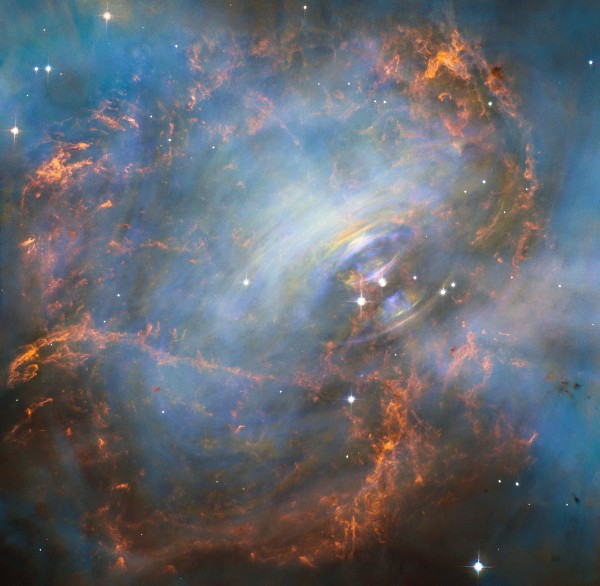NASA and the European Space Agency's Hubble Space Telescope just captured a new stunning image of the Crab Nebula, revealing its complex processes and never before seen structures within its "violent heart".
Inside the Crab Nebula lies massive amounts of gaseous star material from supernova explosions, concentrated within its heart or core. These remnants from dying stars causes these supernovae explosions that leaves a dense core known as a neutron star.
Neutron stars are so dense that they contain as much mass as the sun however, its collapsed stellar material core can measure just a few miles across. Scientists compare this ultra dense material to a thimble full that can weigh as much as Mount Everest. The center of this cosmic object also possesses a rotation rate of 30 complete ones per second, that can emit powerful electromagnetic radiation that shines across the Crab Nebula.
According to ESA officials, this region around the neutron star reveals violent physical processes that are very extreme. The subtle rainbow of colors also demonstrates the rapid motion of stellar material nearest to the star, in this time lapse image. This rainbow effect is due to movement of this material through time, overlapping one image to the next.
In a new composite image by the Hubble Space Telescope, the red hues are indicative of ionized gas within the nebula as electrons are travelling in a spiral motion within the magnetic field surrounding these stellar remnants, which also emit powerful radiation in blue hues. This new image also focuses on the core of the Crab Nebula as opposed to past images.
The nebula can be viewed from the Taurus constellation, from a distance of 6,500 light years away from our planet. This colossal explosion within the core of the nebula was first observed during the year 1054 CE, marking this as one of the first stellar events observed by ancient astronomers.
This explosion was considered as a "new star" in the skies during the time, making it the second brightest object in the night skies, after the moon. After several years, the nebula "star" was no longer visible to viewers from Earth, which occurred before the advent of telescopes.



























